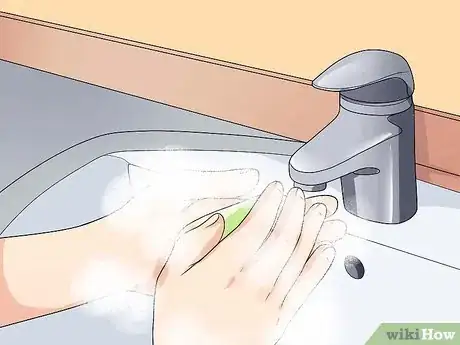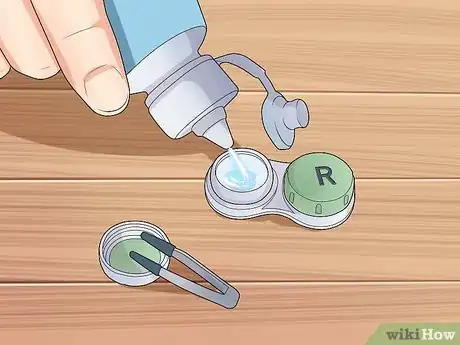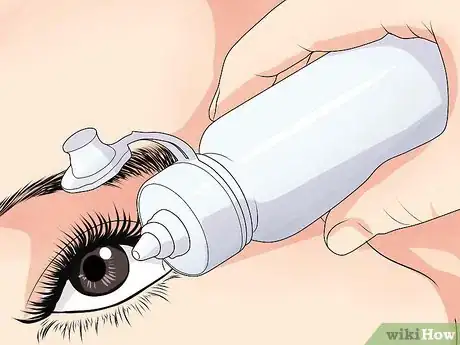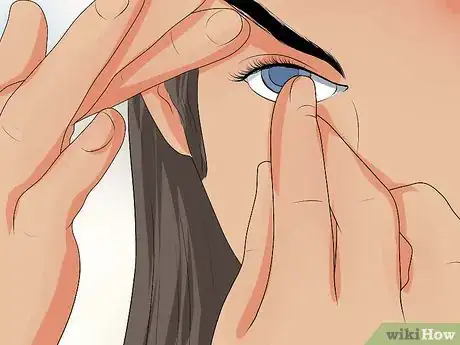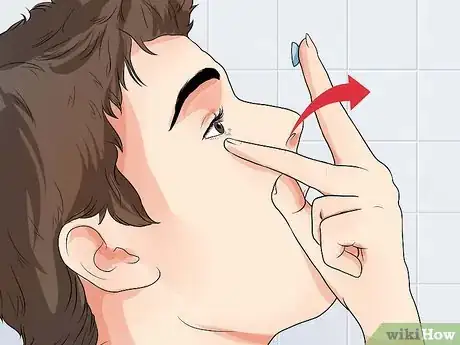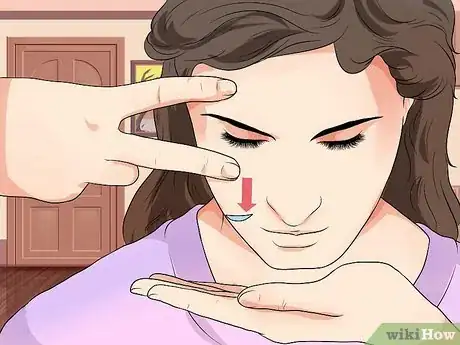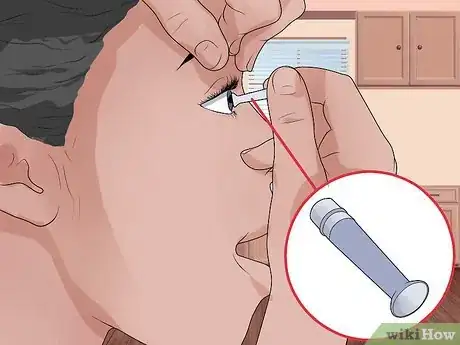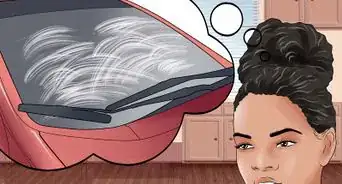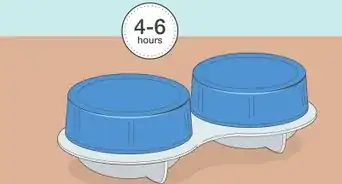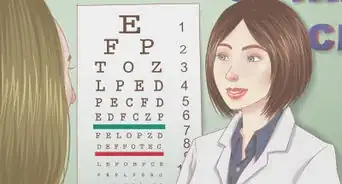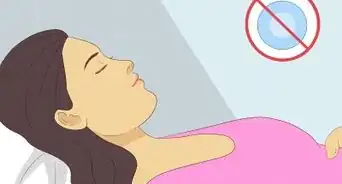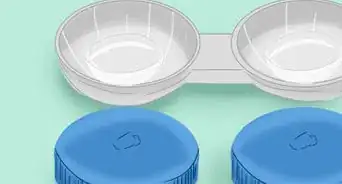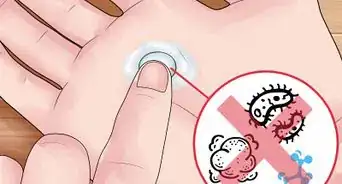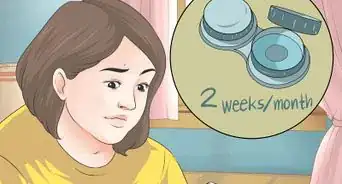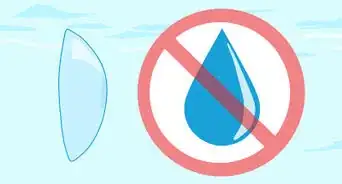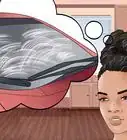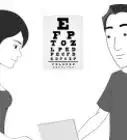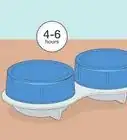This article was medically reviewed by Shaune Wallace, OD. Dr. Wallace is an Optometrist in Nevada with over 14 years of optometry experience. He received his OD from the Southern California College of Optometry in 2006 and is a member of the American Optometric Association.
There are 8 references cited in this article, which can be found at the bottom of the page.
This article has been viewed 128,326 times.
Hard contacts, or rigid gas permeable (RGP), are rigid contacts that are generally are easier to handle due to their rigid exterior, but can sometimes be harder to remove and have a tendency to get stuck in your eyes or move during the removal process.[1] [2] Despite this, there are ways to avoid the frustration of taking them out.
Steps
Preparing To Remove the Lenses
-
1Wash your hands with soap and warm water. You must wash your hands with the right kind of soap before removing your contacts. Avoid using deodorant or moisturizing soap. You don't want the residue on your contacts. There is also no need to use antibacterial soap because it is no more effective than regular soap.[3] Just use regular soap and warm water to wash your hands, and then dry your hands thoroughly with a clean, lint-free towel.
-
2Obtain a container and solution. Before you take out your contacts, you need a storage container, such as a contact case or other sterile storage containers. Also buy sterile saline or contact solution.
- Make sure you are using sterile solution and not saline solution. While saline will keep lenses hydrated, sterile solution will disinfect them. Ask your eye doctor to be sure your solution is suitable for use with your contact type.[6]
- Replace the container about every three months.
Advertisement -
3Prepare the storage container. Once you have the right container and solution, fill your case about halfway with new, clean solution. This will help keep the lenses clean, allow for protein removal, and eliminate bacterial contamination. Take the caps off for easy deposit of the lenses.[7]
Removing Your Lenses
-
1Get yourself ready. Before you remove your lens, add a few drops of sterile saline or artificial tears to each eye. This will hydrate and lubricate your eyes as well as the lenses, which will allow for easier removal. Position yourself low over a flat surface, such as over the top of your dresser or bathroom counter. This will ensure your contacts don't end up on the floor. Next, look straight ahead into a mirror so you can see your eyes.[8]
-
2Position your fingers. Press one index finger in between the top and bottom eyelash line. The should be the center of your contact lens, which will trap it under finger. Use the index finger of your opposite hand to pull up your upper eyelid. Move your top index finger holding the eyelid down toward your bottom lid. The result should be that the contact pops away from your eye.
-
3Remove the lens. Use the middle finger on the hand with the contact to pull your lower eyelid down. Look up and carefully slide the contact down your eye, then pluck it out. Gently rub the contact with solution — use two to three drops and rub for about 10 seconds on each side. This will loosen proteins and debris that are stuck to the lens, improving comfort and longevity of the lens. Then, drop the contact in the waiting solution container.
- Even if the solution you use says it is "no rub," you should not skip this step.
- Repeat the same method on your other eye.
-
4Try the catch method. If that method didn't work for you, you can try the catching method. Lower yourself over a surface to ensure that the contact won't fall to the floor. Look down and place one hand under your eye to catch the contact. With the other hand, take your index and middle finger and pull at the side of your eye away from your nose, then blink. Once you blink, the contact should fall out into your hand.
- You may find it easiest to pull outward on just the upper lid instead of both.
- Repeat on the other side.
-
5Use the suction cup method. If your hard contacts are unable to be removed through other methods, a tool called a suction cup (known as a DMV) can be used to help with removal. The tool adheres to the contact and uses suction to pull it out of the eye. Only use a suction cup if you can visibly see the contact in your eye.
- To use, moisten the center of suction cup with sterile saline solution. Looking straight ahead, apply the suction cup to the center of your contact. Gently move the suction from side to side until it adheres to the contact and it is removed. Place the contact in the solution and repeat on the other eye.[9]
-
6Know when to call for help. Issues with your eye can cause serious, long-term effects. Seek medical attention right away if you spot warning signs such as:
Warnings
- Do not use too much pressure to remove your contacts. Use only gentle pressure.⧼thumbs_response⧽
- Review these procedures with your medical or eye care professional before attempting them.⧼thumbs_response⧽
- These removal techniques only apply to hard contacts and must not be used with soft contact lenses.⧼thumbs_response⧽
- If you have any pain or your eye has been penetrated, have someone take you to an emergency facility or call for emergency services immediately.[14]⧼thumbs_response⧽
References
- ↑ http://www.kellogg.umich.edu/patientcare/conditions/contact.lenses.html
- ↑ http://emedicine.medscape.com/article/1413506-overview#a1
- ↑ https://www.fda.gov/ForConsumers/ConsumerUpdates/ucm378393.htm
- ↑ http://www.cdc.gov/contactlenses/protect-your-eyes.html
- ↑ http://www.cdc.gov/contactlenses/show-me-the-science.html#habits
- ↑ http://www.aoa.org/patients-and-public/caring-for-your-vision/contact-lenses/what-you-need-to-know-about-contact-lens-hygiene-and-compliance?sso=y
- ↑ http://www.aoa.org/patients-and-public/caring-for-your-vision/contact-lenses/what-you-need-to-know-about-contact-lens-hygiene-and-compliance?sso=y
- ↑ http://emedicine.medscape.com/article/1413506-overview#a7
- ↑ http://emedicine.medscape.com/article/1413506-overview#a7
- ↑ http://www.cdc.gov/contactlenses/show-me-the-science.html#habits
- ↑ http://emedicine.medscape.com/article/1413506-overview#a7
- ↑ http://emedicine.medscape.com/article/1413506-overview#a7
- ↑ http://emedicine.medscape.com/article/1413506-overview#a1
- ↑ http://www.cdc.gov/contactlenses/show-me-the-science.html#habits
